I tried the budget Aldi Pilates bed that’s thousands less than its competitors… so is it worth the hype?
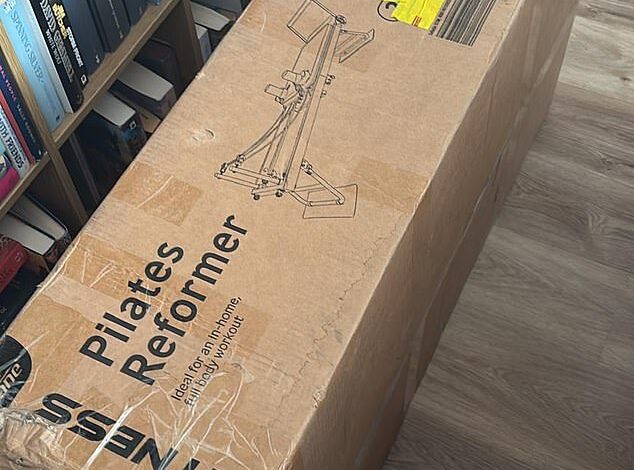
Pilates is a workout that’s adored by celebrities and fitness fanatics around the world, who use the technique to build strength, improve flexibility and fix posture.
But the exercise, which has surged in popularity in recent years, comes with a hefty price tag.
German nurse Joseph Pilates developed Contrology – which eventually became Pilates – during the First World War as a method to continue his strength training while a prisoner of War in the Isle of Man.
Fast forward almost 80 years and the exercise is no longer one motivated by necessity – but rather it’s a high-end, luxurious workout frequented by A-listers who pay premium prices at dedicated Reformer Pilates studios.
The exercise, loved by Meghan Markle and Jennifer Aniston, costs around £35 for a 45-minute class and is surging in popularity in the UK.
As most studios recommend training at least three times a week to see any real benefit, people can quickly see themselves spending hundreds a month on the habit.
Enter Aldi with a solution. The budget retailer this week put a bed on sale for £150, less than 10 per cent of the going rate reformer Pilates bed.
I’ve been doing mat Pilates for more than half my life, and reformer on and off (when I can afford it) for the best part of decade.
So when I saw Aldi where offering a bed for £150 – roughly the cost of five classes at my local studio – I couldn’t resist.
Typically Pilates beds starting at around £1,800 for the most basic models, while some can cost over £6,000. Surely one on sale for £150 is too good to be true?
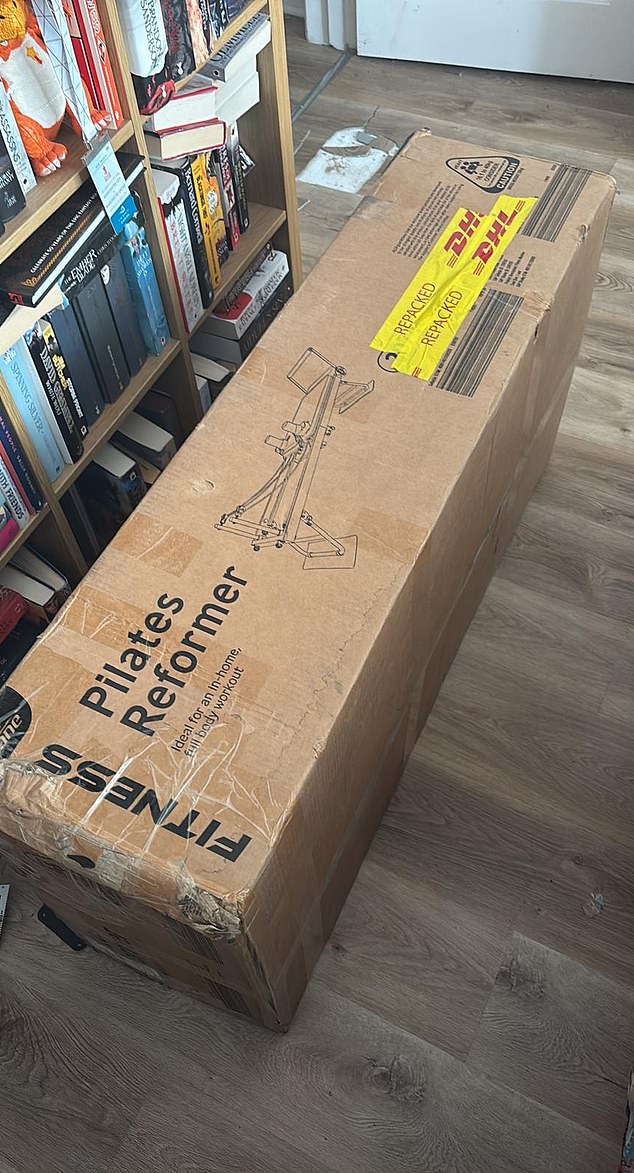
As most studios recommend training at least three times a week to see any real benefit, people can quickly see themselves spending hundreds a month on the habit. Enter Aldi with a solution. The budget retailer this week put a bed on sale for £150, less than 10 per cent of the going rate reformer Pilates bed.
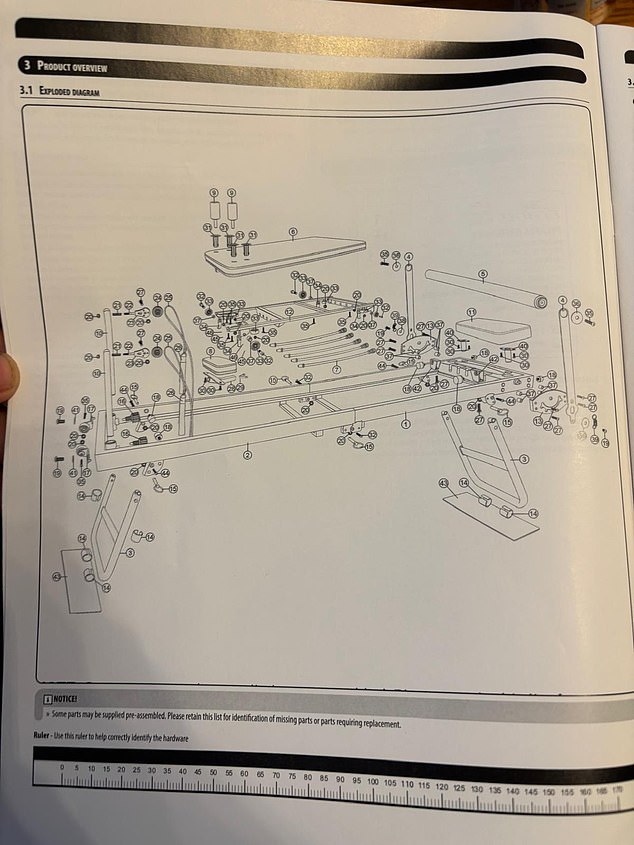
The package comes boxed up with an instruction manual, with diagrams that seemed like you need a PhD to understand
The first barrier was building the bed.
The package comes boxed up with an instruction manual, with diagrams that seemed like you need a PhD to understand, which scared me at first.
However, I soldiered on and despite being a complete DIY novice, but managed to assemble it in about an hour.
The bed, which is about 215cm long and 57cm wide, fits perfectly in my living room. It also folds up very easily and tucks against the wall or into a cupboard when you’re not using it.
You do need space around the bed too – around 30cm on each side – but nothing that pushing the sofa back can’t achieve.
After a tough warm up assembling the bed, I immediately tried it out. And was delighted with the results.
It does almost everything a professional Pilates bed could do – and is surprisingly sturdy too.
I probably wouldn’t be doing box jumps on it out of respect for my downstairs neighbours and I was slightly worried about some of the more tricky balancing moves – but some how managed.
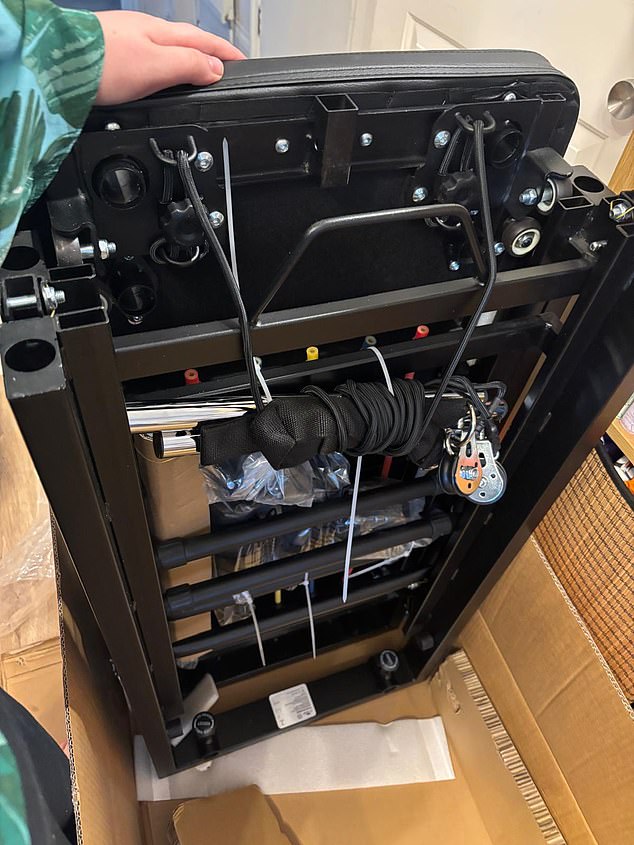
The bed, which is about 215cm long and 57cm wide, fits perfectly in my living room. It also folds up very easily and tucks against the wall or into a cupboard when you’re not using it.
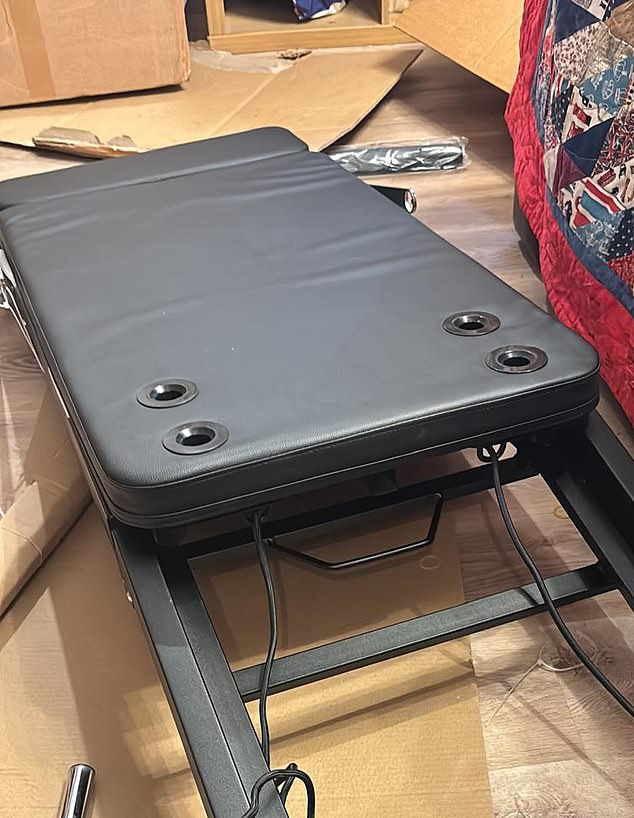
After a tricky assemble – Bridie enjoyed using the bed
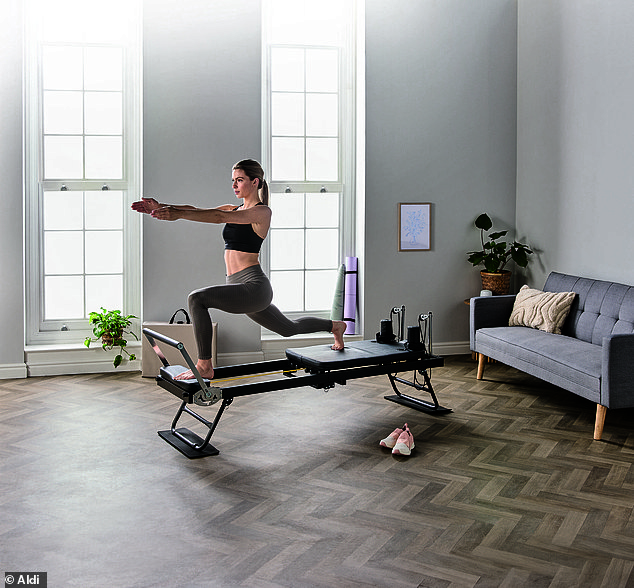
Aldi’s viral reformer Pilates machine will be available to buy in-store on Sunday May 25 and will cost just £149.99
The most obvious difference is the bed doesn’t actually have springs, but resistance bands instead.
Reformer beds typically have five springs with varying resistance, each colour coded.
Instead of this, the Aldi reformer has five resistance bands of three strengths.
It also doesn’t have long and short spring settings, meaning there’s less variation in the amount of resistance you can change.
However, each professional Pilates bed varies slightly in the strength of their resistance too, and Aldi’s certainly stands up in this department.
The beds biggest downfall is the straps. They were really tricky to adjust. I actually had to go under the bed and tie knots in them because they were just far too long.
Luckily, I’m not sharing the bed with anyone so adjusting the straps isn’t something I need to do a lot – but without this it would have virtually no resistance.
The bed also comes with a headrest, foot bar and shoulder pads which are all easy to adjust.
It’s also on the smaller side compared to professional beds.
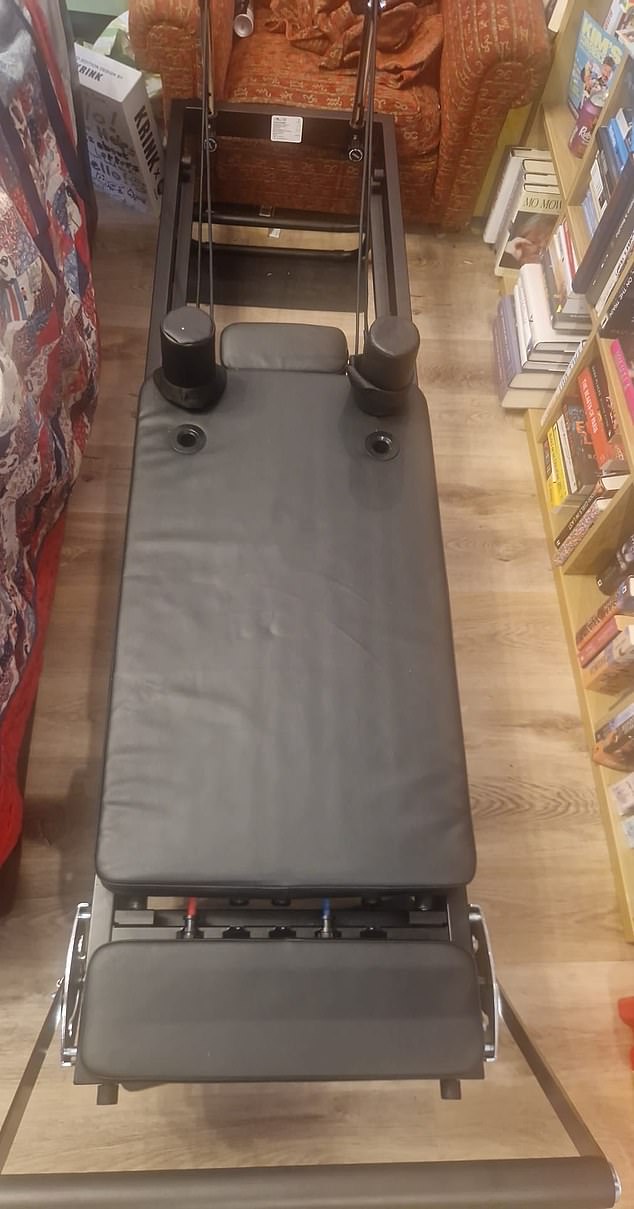
Bed bed is 215cm long – which makes it shorter than most
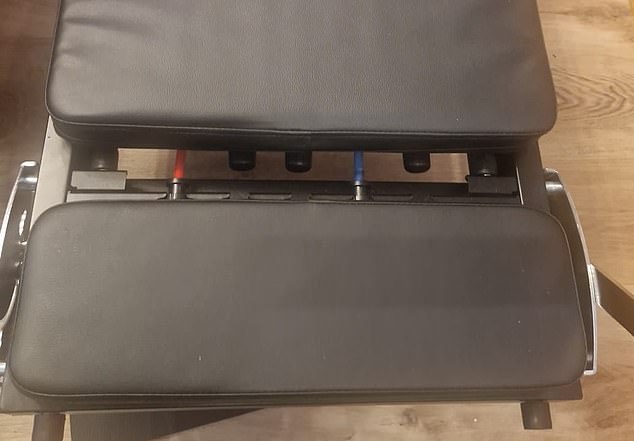
The most obvious difference is the bed doesn’t actually have springs, but resistance bands instead
I’m only 5ft 5 and it worked for me, but anyone 5ft 9 or taller may not get quite a full range of movement on the bed.
Despite this, the flow was smooth, and I could 90 per cent of a regular Pilates class on there. I even tried out some of the scairier moves like plank to pike and managed it (albeit slightly nervously).
With that said, I would absolutely not recommend this to complete beginners.
You need at least a basic understanding of the fundamentals before working out on a reformer bed.
Despite evidence of potential benefits including weight loss, there’s a dark side that arises when gymgoers fail to follow the correct procedures or attend classes with unfit trainers – and a slew of gymgoers have faced harmful repercussions.
On the topic, doctor Veronika Matutyte, explained to Femail: ‘Reformer Pilates can be a highly effective method for improving flexibility, strength, and posture. However, it carries certain risks, particularly when equipment is faulty or improperly used.
‘It is also crucial that instructors are well-trained and knowledgeable about Pilates mechanics. Inexperienced instructors may unknowingly encourage clients to perform exercises incorrectly, which could lead to injuries such as tendon tears or strains.
‘Additionally, Pilates, if not done properly, can exacerbate existing injuries, especially if participants overexert themselves or fail to maintain proper alignment. Many people may not realise that some Reformer Pilates exercises require careful attention to form and posture to avoid strain on joints and muscles.’
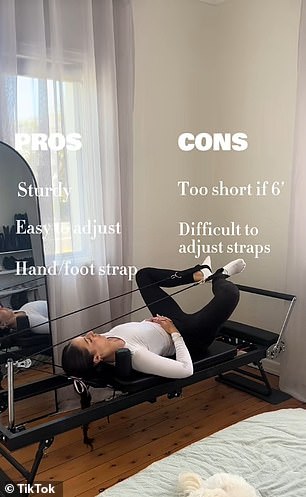

When the beds went on sale in Australia – they quickly become a TikTok sensation
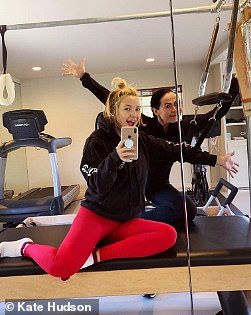

The exercise is very popular with celebrities – including Kate Hudson (left) and Cristiano Ronaldo (right)
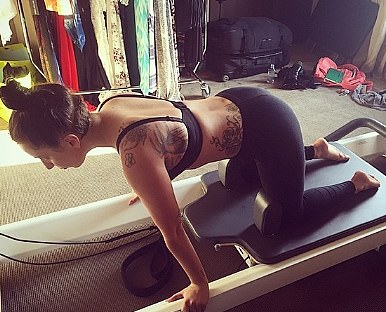
Lady Gaga has also showed off her exercise at home
To minimise these risks, it is essential to start with low-intensity sessions and gradually build up. If you experience any discomfort or pain, it is important to stop immediately and seek medical advice.
The instruction manual does come with basic guide with some moves – some of which are misprinted.
If you do have a basic understanding, there are thousands of free videos on YouTube, as well as various apps offering free workouts.
‘Pilates is a low-impact exercise system designed to improve overall physical strength, posture, and flexibility,’ Dr Hana Patel, NHS GP and GP Medico-Legal Expert Witness, told Femail.
Patel, who sometimes recommends the workout to patients suffering from chronic back pain, added: ‘Unlike conventional strength training that often focuses on individual muscle groups, Reformer Pilates emphasises core strength, alignment, and controlled movement patterns.
I live in west London, where there are 10 studios within a 20 minute walk of my front door.
If you live in a more rural area where it’s more difficult to access a studio, it’s 100 per cent worth it.
Would I upgrade if I had a few grand knocking around? Yes.
Is it as high quality as a studio bed? No.
Is it worth it for £150? Absolutely.
It’s probably not enough to give up studio Pilates entirely, but it’s an amazing thing to have between classes.




